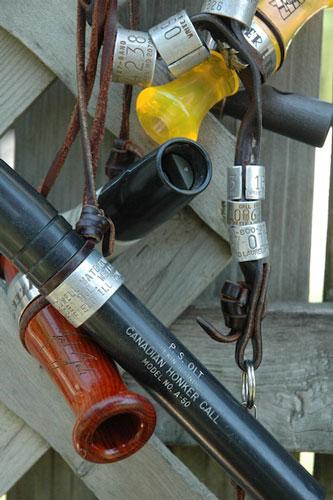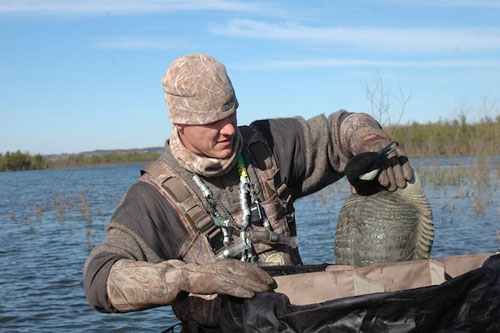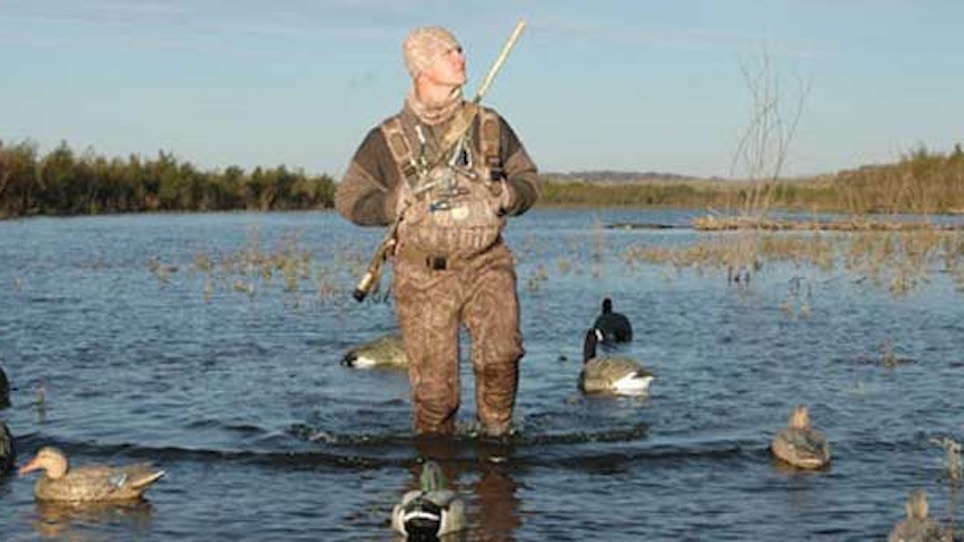
Switch to a flute call
Everywhere they go today, geese are aurally assaulted by hunters blowing all-the-rage short-reed calls. Truth is, a good flute call like the traditional OLT A-50 can sound just like an old gander, and what’s more, it’s a sound that geese just don’t hear anymore. Give them something different, and they just might respond.
Rediscover pass-shooting
Consistent, effective pass-shooting requires (1) locating and positioning yourself in a regular flight line, (2) properly matching your choke and load to the distances involved, (3) elevating your shooting ability, (4) developing self-discipline, and (5) often waiting for those weather conditions which will lower the birds’ altitudes to within reasonable ranges.
Leave the blind behind
The invention of the modern low-profile layout blind has, few will argue, revolutionized the way ’fowlers hide from geese. However, some would say that today’s Canadas are getting wise, even to these easily camouflaged and extremely portable hides. If that seems to be the case, perhaps it’s time to try something different and leave the blind behind. Is there a brushy fenceline within effective range of where you might set a spread? Is there a slight depression where, draped in a ghillie suit, you might simply lie prone? What about the natural cover, i.e. tumbleweeds, goldenrod, Scotch Broom, or foxtail, at the field edge as opposed to laying out in the center? Certainly, such supposedly unorthodox concealment tactics might not work in every situation, but it never hurts to try.
Hunt over water
Remember, geese are waterfowl, and despite field hunting’s popularity and effectiveness, a small spread of realistic Canada floaters set on a farm pond, marsh or river backwater can be deadly, for the simple fact that few gunners hunt Canadas exclusively over water. Tone down your calling in terms of volume and aggressiveness, and throw in a handful of shoreline full-bodies, if possible.
Add geese to your ducks
Geese are often taken as bonus birds where duck and goose seasons coincide. It makes sense to set a half dozen Canada floaters off to one side of your puddler or diver spread. The Canadas’ size makes the entire spread more visible, particularly on big water, and ducks will often show favoritism to the goose blocks in a rig.
 Stock up on silhouettes, shells, and socks
Stock up on silhouettes, shells, and socks
Leave the full-body decoys at home and set a spread of old school silhouettes, half-shells and windsocks. Full-bodies are all the rage, but geese everywhere are being hunted over them. Three or four dozen mixed silhouettes, shells and socks — or the new silhouette/windsock hybrid, Deadly Decoys (deadlydecoys.com) — can set your rig apart from all the others. The lower cost of all three styles of retro-decoy compared to full-bodies allows you to set a larger spread, too.
Downsize your spread
Conversely, downsizing your Canada spread can be the ticket to success. The man behind the Eliminator layout blind, Ron Latschaw, will often pare his spread down throughout the season until he’s using just eight full-bodies during the final weeks. It’s important to note that as you decrease decoy numbers, decoy realism must proportionately increase; there’s not much margin for visual error when gunning over eight blocks versus 180.
Learn to shoot
It’s senseless to set the perfect spread and blow the most realistic notes if, when the time comes, you can’t hit anything. Off-season trap, skeet, sporting clays; the details don’t matter. What matters is you improving your shooting skills.






